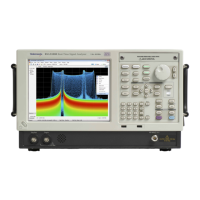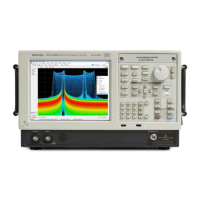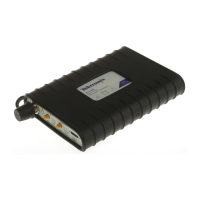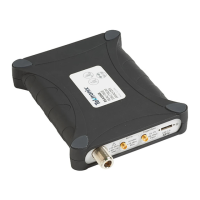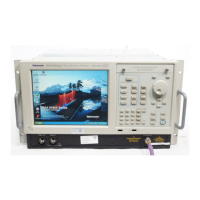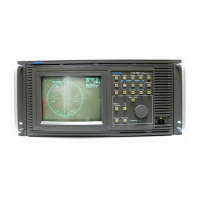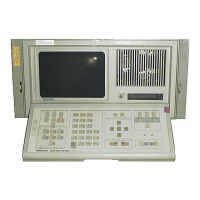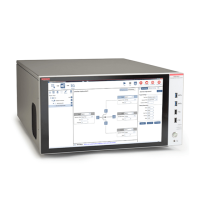Performance Verification
e. Read the noise l
evel on Marker M1 in dBm/Hz.
f. Subtract the value of Carrier Power obtained in step 9 in order to obtain
the phase nois
e amplitude at +6 MHz.
For example, if Carrier Power = 4.7 dBm and M1 = –145.1 dBm/Hz, then
M1–Carrier
Power = –149.8 dBc/Hz.
g. Enter the value obtained at 6 MHz in the test record for phase noise at
6MHz.
17. Obtain the phase noise at 10 MHz offset. Start by setting the RSA5100B
to the sett
ings below:
a. Center Frequency (Center key): 1010 MHz.
b. Span (Span key): 10 kHz.
c. Select Run > Run Single.
d. Set the Marker Frequency to 1010 MHz.
NOTE. The intent of the Phase Noise test is to measure the phase noise level of
the instrument. The phase noise specification does not cover residual spurs. If
the specific measurement frequency results in measuring a residual spur that
is vis
ible above the noise level, the phase noise specification applies not to
the spur but to the noise level on either side of the spur. Please refer to the
Spurious Response specifications. (See Table 20.) Also, refer to the Spurious
Response section of this procedure to determine whether or not a residual spur
is within the specification. (See page 124, Spurious Response.)
e. Read the noise amplitude on marker M1 in dBm/Hz.
f. Subtract the value of the Carrier Power marker obtained in step 9 to obtain
the phase noise amplitude at +10 MHz.
For example, if Carrier Power = 4.7 dBm and M1 = –146.1 dBm/Hz,
Then M1-Carrier Power = –150.8 dBc/Hz.
g. Enter the value obtained at 10 MHz in the test record for phase noise
at 10 MHz.
84 RSA5100B Series Technical Reference

